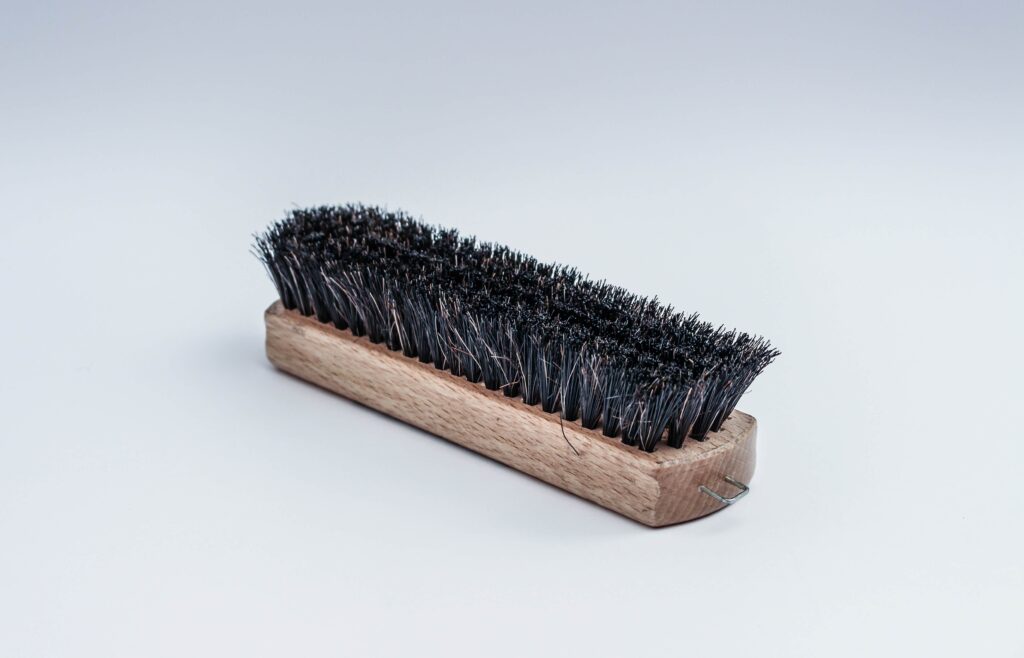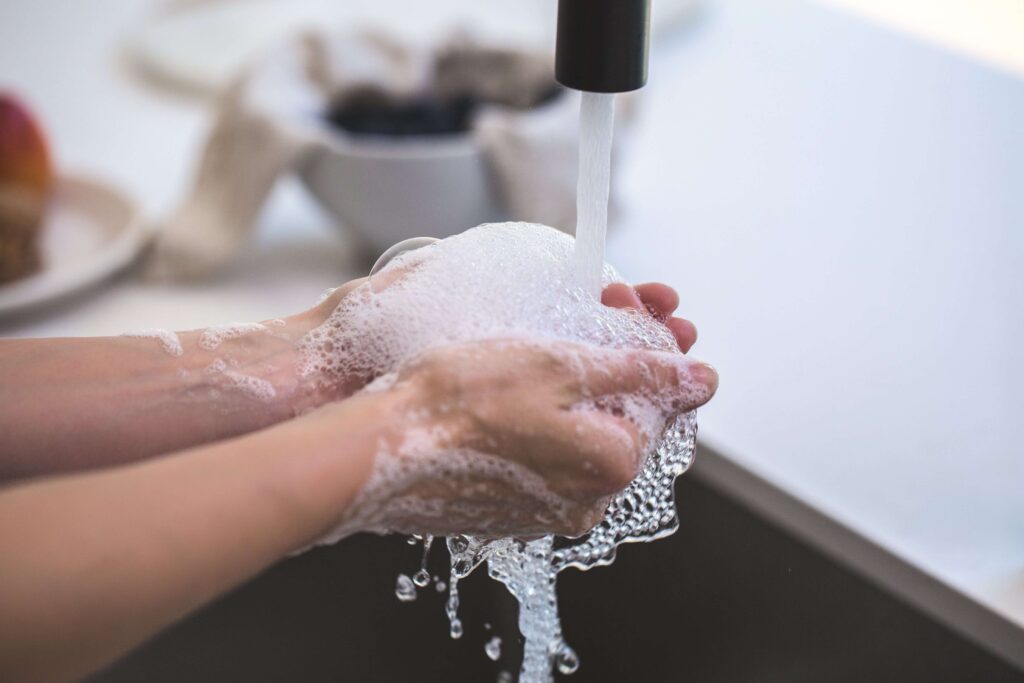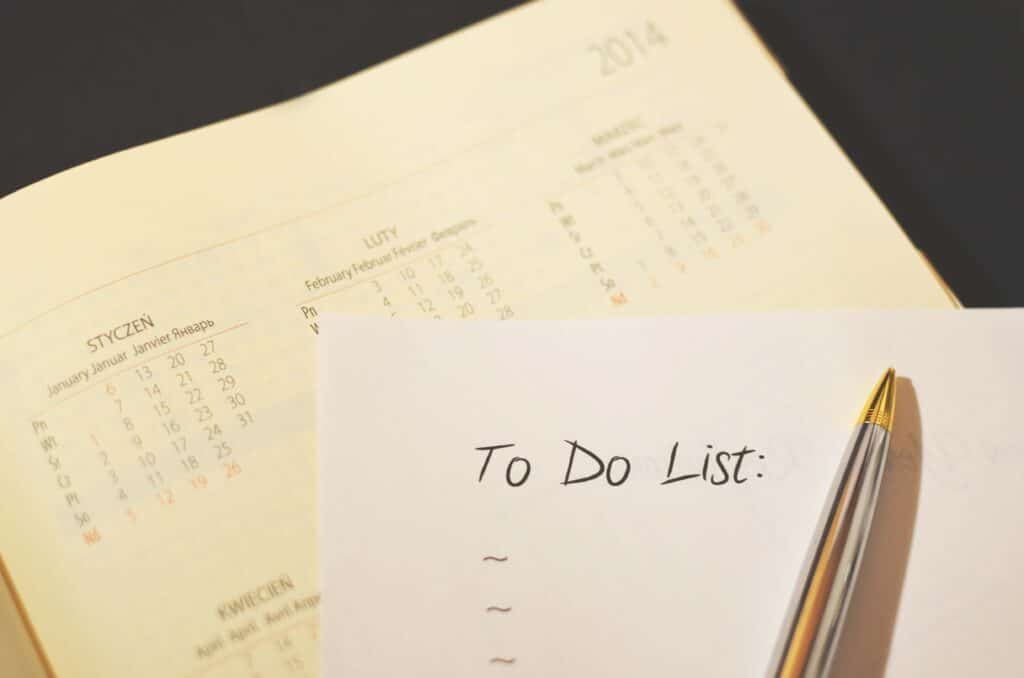Your 5-Step Apartment Cleaning Checklist to Stay More Organized
When it comes to keeping an organized apartment, cleaning habits and organization skills often go hand in hand.
If you’re always behind on laundry, dishes, and your other cleaning tasks, it can be difficult to get and stay organized.
It may seem like you’re always spinning your wheels. You no sooner finish one chore then another (or the same one!) pops up. If this is you, the answer may be that you need to stop what you’re doing and try another approach.
Chances are, you’re so busy doing ongoing superficial cleanup that deep cleaning is just another task you keep putting off.
But a thorough cleaning will start you at square one and let you adjust minor habits to create a more efficient system of regular upkeep.
This in-depth cleaning up front will help you become organized and save you time, stress, and headache in the long run.
It only takes this 5 step apartment cleaning checklist to get you a more organized apartment!
1. Start With a Deep Cleaning
Some people refer to this as a “spring cleaning,” but it’s not limited to a season. It’s simply a time, usually once or twice a year, when you go through your apartment or house room by room doing a thorough deep cleaning.
When you approach your deep clean, you should think of the big picture in terms of home maintenance. What are the tasks you haven’t done in a while that you know should be done? What can you do now to ensure you get your security deposit back later?
Here’s a room-by-room breakdown of typical spring cleaning tasks in most apartments.
The Bedroom
It’s a good idea to start your deep cleanse in the area where you spend the most time. For most people, that’s the bedroom.
Don’t worry about the clutter yet — that will come later. If you do have a lot of items taking over the room and preventing you from cleaning, you might want to invest in a large tote or two for temporary storage. It may even come in handy later in the organizing process.
Take all the time you need to deep clean your bedroom, making sure to include the following:
- Flip your mattress if it’s reversible — rotate it if it’s not
- Change your bed linens
- Wipe down all of your furniture with a microfiber dust cloth (best for catching the dust without harsh chemicals)
- Clean your windows, windowsills, and blinds or curtains
- Dust your light fixtures and ceiling fan blades
- Change air filters if applicable
- Vacuum or mop
- Dust the baseboards
The Kitchen
Kitchens are a haven for bacteria, from the counters to the sponge you use.
Adjusting your daily habits can reduce the potential for cross-contamination. But you should add a deep clean of the kitchen to your to-do list as much as possible.
Be sure you complete the following tasks at a minimum:
- Disinfect all of your surfaces, including the refrigerator, countertops, cupboards, and handles — anything that might be contaminated by touch
- Clean and disinfect the sink and faucet handles
- Replace your kitchen sponge if it is over three months old
- Clean your oven (some ovens have a self-cleaning option) and replace any disposable drip pans
- Clean grease build-up from under the vent hood or over-the-oven microwave
- Wipe down the stovetop and clean out grime from corners and under burners
- Empty your refrigerator and clean the shelves
- Put items that are still fresh back in the fridge and trash the rest
- If you keep baking soda in the fridge, replace it
- Test and change your smoke alarm batteries and your fire extinguisher (if you don’t have these things, now is the time to invest!)
- Vacuum or mop
The Bathroom
Another hotbed for germs is the bathroom. If you’re not scrubbing your toilets, sinks, and showers regularly, the germs have taken over.
Even if you are, a thorough cleanse is in order.
Pull on your rubber gloves, grab a disposable mask and your cleaning supplies, and prepare for a germ annihilating deep scrub.
- Scrub your toilet, toilet seat, and clean the lid and outer surfaces
- Scrub the soap scum from your shower and tub as well as the showerhead
- Use an appropriate mildew-resistant cleaner to clean the grout and caulking
- Clean your sink and faucet
- Change your toothbrush (most dentists recommend you do this at least 3 -4 times a year)
- Clean the window and windowsill
- Don’t forget the molding; if you don’t have proper ventilation in your bathroom, mold and mildew can grow on your ceilings and molding
- Vacuum or mop
The Rest of the Apartment
Most people don’t make big messes in hallways, studies, and living rooms, so they shouldn’t be as difficult or time-consuming to deep clean.
As you go through the rest of your home, tackle the following as needed:
- Change filters
- Check smoke alarm batteries
- Clean surfaces with microfiber cloths
- Clean and dust fan blades
- Vacuum or mop as needed
- Clean windows, curtains, and blinds
- Check ceiling corners for cobwebs
- Replace burnt-out lightbulbs
- Wipe down light switches and doorknobs with all-purpose cleaner or disinfectant
As you go room to room, you may notice other areas that need to be addressed. As long as they fall in “cleaning” and not organizing, go ahead and take care of them.
2. Organize Your New, Clean Apartment
With the down and dirty cleaning done, now you can do the fun part!
Starting back in the bedroom, organize room by room. Get rid of things that you don’t use, organize your pots and pans, tidy up your closets, and do a general decluttering.
Keep or Toss?
Knowing what to keep and what to get rid of isn’t always easy. You may have already started the reduction process in your bedroom when you did your closet cleanout. If not, you can begin there.
There are a few rules of thumb when you start decluttering.
1. Get Rid of Business Documents that are Over Six Years Old
Most credit card statements and other bills can be safely shredded after six years. Some documents have their own rules, like IRS tax returns, so check before you toss.
2. Keep Your Family Photos, But Organize Them
If you have a lot of pictures and limited space, there are companies out there now that will digitize your photos for you or turn them into scrapbooks.
3. Get Rid of Mismatched Containers
Storage containers or thermoses without lids and lids without containers won’t do you any good. Go ahead and get rid of them now.
4. Donate Usable Goods You’re Not Using
If you’d prefer to sell them in a yard sale, store them away. Otherwise, find a family in need or check with local charities to see who accepts what you are getting rid of.
5. Keep the Memory, Not the Possession
Do you have old gifts and handmade items lying around that suit no purpose other than as a memento? If so, would it be possible to take a picture of the item, store it in your scrapbook, and then donate the actual gift? If you absolutely can’t part with it, keep it. But if it’s just a fond memory, it might be time to transfer it to a photograph.
P.S. Check out Handy to see how they can simplify the cleaning process.
3. Adjust Your Habits to Make Keeping up with Cleaning Easier
There’s no way around it — cleaning has to be done. You can do it the hard way, or you can do it the smart way, but you’re going to do it.
The good news is that it’s actually simple to clean smartly with just a few minor adjustments in your daily habits.
Five Habit Changes that Make Cleaning Simple
Regular, often overwhelming chores, like laundry and dishes, can seem never-ending.
Instead of waiting until it all piles up, try these small adjustments in your daily schedule to keep on top of your chores and stay organized.
1. Clean Up After Each Meal
Breakfast may be a rush of getting ready, shoveling food down, and running out the door. Lunch and dinner may be similar, with other tasks begging for priority.
But a simple 60-second pause in your day to reduce the chaos for later can save more than that minute over the day.
2. Make Your Bed Every Day
Why make your bed when you’re just going to sleep in it that night? Isn’t it a waste of time?
Not according to some of the top successful speakers on the subject. A well-made bed sets your day up to be productive and increases your overall mood.
3. Don’t Wait Until It Piles Up to do Laundry
Instead of a “laundry day,” make it a goal to do one load of laundry each day. Wash and dry and put it away daily to help keep it manageable instead of overwhelming.
4. Set Daily Cleaning Priorities
When you get up each day and go about your morning, consider what needs to be done. Not everything has to be done every day, but if you tackle one or two priorities daily, it’s easier to manage.
For instance, “Today I need to take out the trash because tomorrow is garbage day, and I also need to clean the cat litter box.” Limit yourself to just a few things a day and add more on the days with more flexibility to handle it.
5. Take 10 minutes Each Night to do a Once-Over
Once everyone is settled down for the night, take a few minutes to enjoy the peace as you go through and fold the daily laundry.
Clean up the kitchen, straighten the living room, and do whatever you need to do to wake up to a home that isn’t full of clutter and chaos.
Cleaning doesn’t have to be a mountainous chore that never ends. When you nip it in the bud a little at a time by adjusting your daily habits, it becomes more manageable.
4. Create Daily, Weekly, and Monthly Checklists
As you adjust your habits, you’ll find yourself with time to accomplish more tasks — like during your 10 minutes in the evening before bed.
To better organize yourself, implement a checklist system to ensure you hit every chore regularly.
Not everything has to be done every day.
Make cleaning less stressful by separating your cleaning chores into achievable goals. It will be easier to stay on track and avoid bigger chores later!
Break cleaning tasks down into a checklist of daily, weekly, monthly, semi-annual, and annual to-dos.
Daily Chores
Include these quick chores in your daily cleanup to keep your home organized:
- Wipe down kitchen countertops and tables
- Wash and put away dishes/ Load or empty the dishwasher
- Wipe down the kitchen sink
- Replace your dish towel (a germ factory)
- Load or empty the dishwasher
- Pick up scattered items from floors and furniture
- Complete one load of laundry
- Tidy up the bathrooms
- Tidy up bedrooms
Weekly Chores
Implement a weekly chore system for everyone in your family or make your own list and include tasks like:
- Change the bed linens
- Scrub the toilet bowl
- Wash down the tub or shower
- Clean mirrors with glass cleaner or white vinegar
- Wipe out the microwave
- Empty the garbage (more often if necessary)
- Mop and vacuum (more often if necessary)
- Dust surfaces
Monthly Chores
Less frequent chores still have to be tackled regularly.
These include:
- Dusting harder to reach areas like fan blades and higher surfaces
- Cleaning blinds and curtains
- Room cleaning/organizing
- Carpet stain removal
- Clean up garage and porches
- Clean the dishwasher by running a cycle with white vinegar or baking soda
- Clean the trash can
Annual and Semi-Annual Chores
Deep cleaning, or “spring cleaning,” as discussed earlier, will still have to occur, no matter how organized you are throughout the year.
But now it will be much easier!
Include tasks like:
- Checking and changing smoke alarm batteries and fire extinguishers
- Cleaning ceiling molding and cornices
- Decluttering your closets and junk drawers
- Deep cleaning baseboards
5. Working Smarter to Clean Easier
Time is important. If you can work smarter, not harder with your cleaning and organizing techniques, it’s a great way to save yourself a few minutes.
Try a few of these cleaning tips to cut your cleaning time down regularly.
- Dust before you vacuum.
- Work from top to bottom when you clean.
- Use microfiber cloths when you dust.
- Keep all-in-one wipes in each room — you never know when they’ll come in handy.
- Use drain traps in every sink and tub.
- Sometimes the natural tips work best, so give them a try.
By tackling cleaning head-on and using these five steps, you’ll find it’s not the torturous, never-ending job you once thought.
And who knows, you might even — dare we say — enjoy it?



